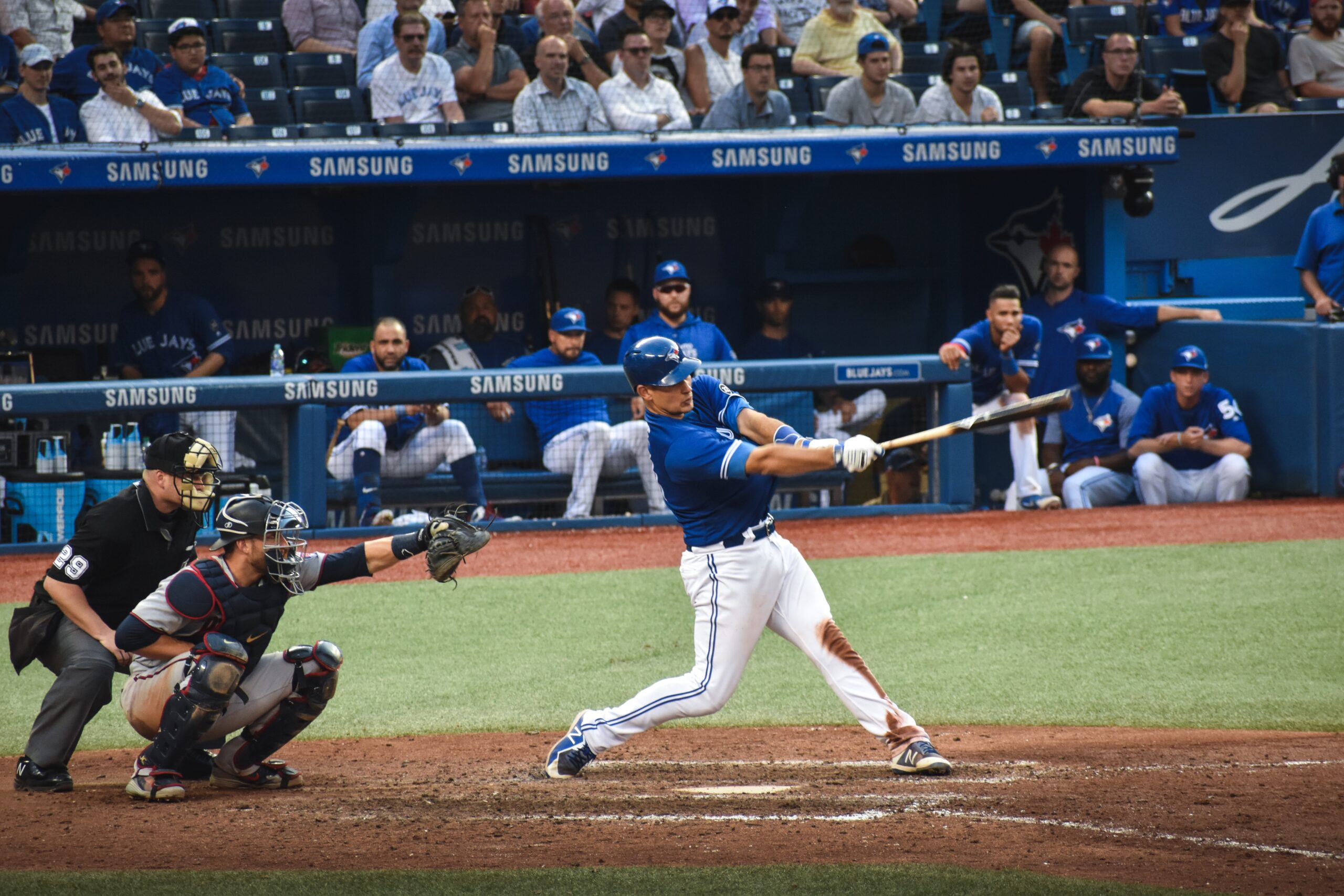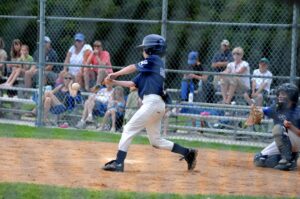A foul ball is a baseball hit that falls outside of the foul lines extending from home plate past first base and third base.
The most common foul ball from hitters goes behind home plate and it can seem like certain players are at bat for endless pitches!
Contents
- Do 4 fouls equal a strike?
- Can you steal on a caught foul ball?
- Can a baseball go foul and then fair?
- What happens if you bunt a foul ball?
- Can you score on a foul ball?
- What is a foul-line baseball?
- What is a foul pole in baseball?
- What happens is a baseball hits a foul pole?
- What is the most foul balls in one at bat?
- Summary
How many fouls can you get in baseball?
There is no limit to the number of fouls you can get in baseball.
A foul ball not caught counts as a strike against the batter unless it would be the third strike. The exception is a bunted foul ball, which results in a third strike.
Each ballpark has its own ground rules and may specify that batted balls striking certain objects result in a foul ball, such as: Fencing, railing, nets, or walls.
A foul ball is different than a foul tip. A foul tip is when the baseball makes contact with the bat and travels back to the catcher’s hands and is caught. This results in a strike if there are zero or one strike on the batter. However, if the foul tip is caught when there are two strikes, the result is an out. Sometimes hitters can barely get their bat on the ball which results in a foul tip that is still caught by the catcher for a third strike. This
The only way to get out from a foul ball is from the opposing team catching a ball in foul territory, the catcher catching the ball off a foul tip with two strikes on the batter, or the batter attempts to bunt with two strikes where the bunted ball lands in foul territory.
Here is an insane video on one of the longest at-bats in baseball history that took place in spring training a couple of years ago:
Brandon Belt had a 21-pitch at-bat a few years back in a regular season game:
So, as you can see, unless a foul ball is caught for an out, you can hit unlimited foul balls.
Do 4 fouls equal a strike?
In different situations, a foul ball may equal a strike but, in some situations, a foul ball may result in another pitch without any consequence or negative outcome to the batter. In fact, fouling additional pitches could benefit the batter as the batter gets another chance to bat and adds more pitches to the pitcher’s pitch count and there isn’t a limit to how many fouls can you get in baseball.
When there are two strikes on a batter, the batter may foul off any number of pitches without limit without being called out.
The only way the batter would be called out for any foul would be a ball-batted foul that is caught by the opposing defense or a foul tip on two strikes caught by the catcher.
Can you steal on a caught foul ball?
A ball that is batted foul and not caught or resulting in an out is considered a “dead ball” meaning the play is over and no runners may advance. A foul tip that is caught by the catcher resulting in one, two, or three strikes is considered a “live ball” and therefore is in play so runners may attempt to advance or steal a base.
Can a baseball go foul and then fair?
A batted ball may start foul and then land fair if it occurs before the ball reaches the distance of first or third base. The key is where the ball lands prior to reaching first or third base and whether the ball was touched by a player or not.
If the balls were to start foul and land fair and does not go beyond first or third base, the ball would be considered a fair ball. If the ball were to start foul, go beyond first or third base and then land in fair territory, the ball would be considered a foul ball.
What happens if you bunt a foul ball?
If the batter attempts to bunt and the result is the ball lands foul, it is considered a strike and treated the same way as any other batted foul ball.
However, the exception is if a batter attempts to bunt with two strikes and the result is the ball lands foul, the batter is called out and is counted as a strike out.
Can you score on a foul ball?
A batted ball that lands in foul territory and is called a foul ball is a “dead ball” so any runners on base may not advance. If a batted ball is hit in foul territory and is caught in the air, it is treated the same as any ball hit within the foul lines meaning any runners on base may attempt to advance to the next base so long as they tag up. This includes scoring runs.
What is a foul-line baseball?
A foul line is either of two straight lines extending from the rear corner of home plate through the outer corners of first base and third base respectively and prolonged to the outfield boundary of the baseball field.
What is a foul pole in baseball?
A foul pole is either of two poles, one on each foul line at the outfield boundary of the baseball filed. It is a vertical continuation of the outfield fence or wall and is used by umpires as a sight line to determine if a baseball hit towards the foul line in the air is a fair or foul ball.
What happens is a baseball hits a foul pole?
If a batted ball hits a foul pole, it is considered a fair ball. If the ball hits the foul pole above the height of the wall or fence the pole is attached to, it is called and scored as a homerun. A foul pole is aligned so that the pole is in fair territory. Some people like to call it the “Fair Pole”.
If a batted ball is hit above or near the foul pole without it touching or making contact with the pole, it is then up to the umpire to determine whether the ball is a fair or foul ball. In some cases, the umpire will need to determine if a ball is both a fair or foul ball and if the result is then a homerun.
What is the most foul balls in one at bat?
The most foul balls ever hit in one at bat in Major League Baseball was by Brandon Belt of the San Francisco Giants on April 22, 2018, when Belt hit 16 foul balls in the first inning against Jaime Barria. The at bat had a total of 21 pitches, 16 for foul balls (11 straight), and resulted in a fly ball to right field for an out.
Summary
The number of foul balls in baseball or softball has both direct and indirect positive and negative results, depending on the situation. Fouling off a number of foul balls is positive for a batter as they get to keep their at-bat for another chance to get a hit or walk to reach base. The same is a negative impact on the pitcher as their pitch count increases, lowering their chances of pitching longer in the game.
However, sometimes a pitcher would prefer a foul ball in a situation where they have three balls and do not want to walk the batter.
The best takeaway from this and undeniable rule to know in baseball and softball is that bunting with two strikes for a foul ball is an out.
Avoid bunting with two strikes. Bunting with two strikes is extremely rare and statistically unsuccessful. We know it can be confusing figuring out how many fouls you can get in baseball but we help this post helped made it easier to understand!
Other Popular Articles:
Where does the home team sit in baseball?



